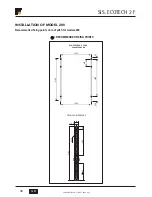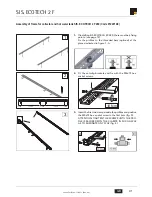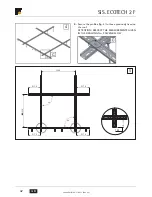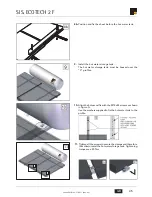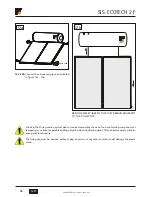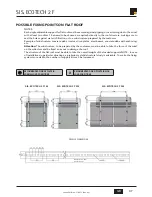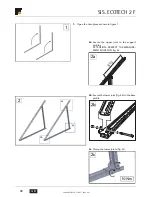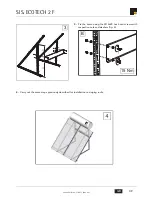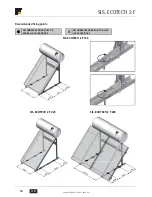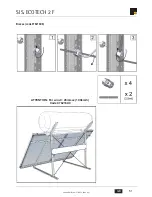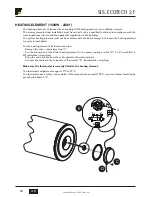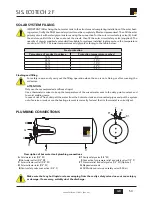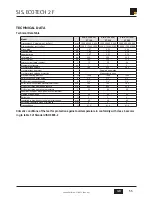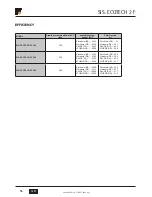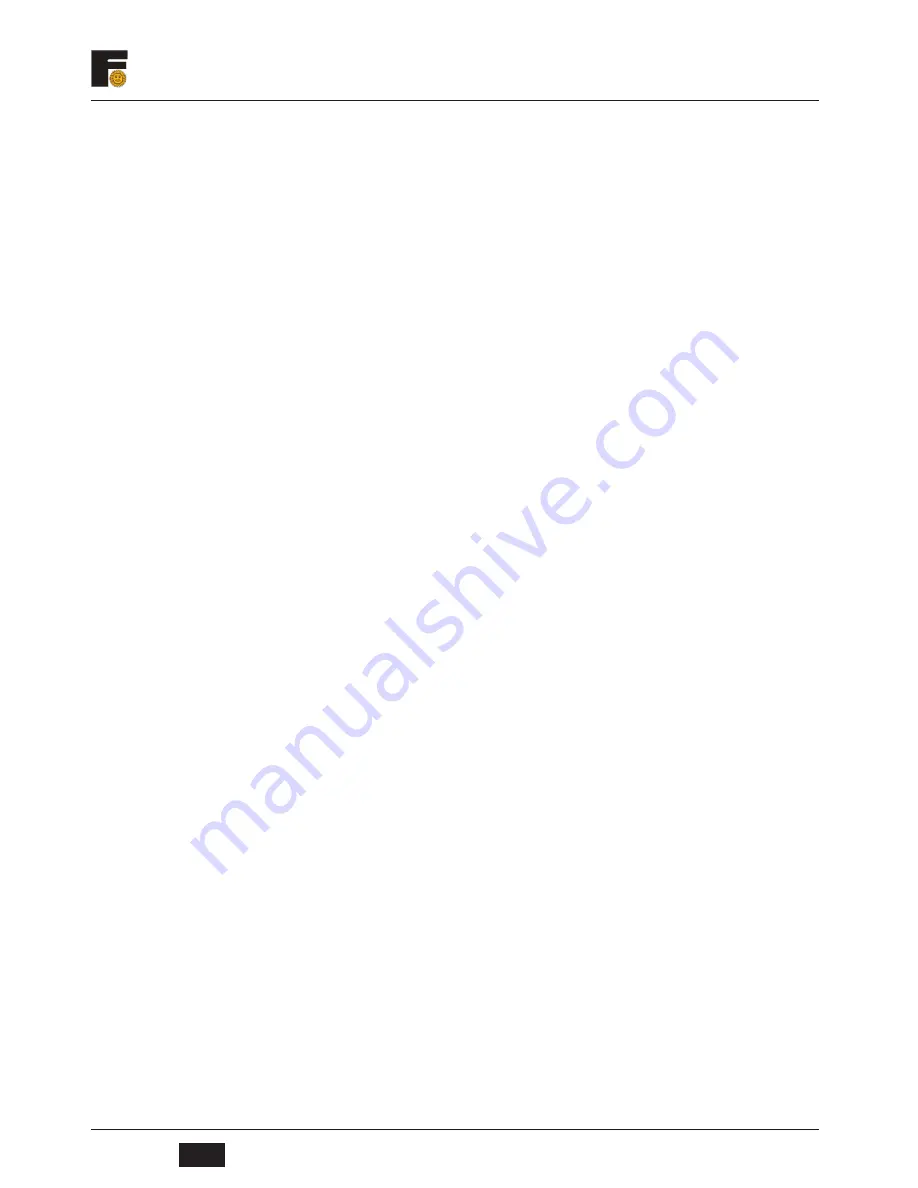
54
SIS. ECOTECH 2 F
Code 3541B140 - 11/2011 (Rev. 00)
GB
DISCHARGE
DUCTING
Since the water discharged by the Temperature/Pressure safety valve is usually close to 100°C, the dis-
charge ducting should be carried out as follows in order to prevent injury to people.
The discharge water must be conveyed in a vertical pipe through a funnel at a suitable distance from the
discharge point with anti-backflow air vents. The pipe must have the following characteristics:
it must not be more than 50 cm from the valve outlet and must be positioned in the same room as the
storage or in a closed room.
it must have a vertical section of at least 30 cm before continuing with a slope in any case facilitating
the flow of water.
the width of the pipe must be at least one size larger than the nominal size of the valve outlet and must
end in a safe place where there are no risks for anyone in the vicinity.
DHW PIPES
Connection
To protect the DHW circuit, firstly it is necessary to install the safety valve contained in the kit.
install the safety valve on DHW side 8.5 bar.
Due to the temperature differences and therefore the pressure differences occurring during the day, water
may come out the safety valve. Ensure an adequate drain for the water.
The DHW piping and connections are the user's
responsibility.
connect the cold water pipes "A" to the hot water pipes "B" in compliance with the local regulations.
Insulation
Carry out the insulation work only after checking the tightness of all the unions.
Insulation of pipes outside and inside the building by the user.
to insulate the external pipes, use material resistant to UV rays and high temperatures (150 °C).
to insulate the internal pipes, use material resistant to high temperatures (150 °C).
START-UP INSTRUCTIONS
FINAL CHECKS
check the tightening of screws and fixing of structures on the roof.
check the tightness of pipes.
check the electrical connections.
make sure the solar circuit has been adequately filled with the water-glycol mixture.
PERIODICAL CHECKS
Venting the air
The air must be vented:
at the time of start-up (after filling)
whenever necessary, e.g. in case of faults
Warning:
Danger of scalding caused by contact with steam or the heat transfer fluid!
When emptying the system, the collectors must be cold! Cover the collectors and empty the system if pos-
sible in the morning.
Check the heat transfer fluid.
Periodically (every 2 years) check the antifreeze properties and the pH of the heat transfer fluid.
Check the antifreeze with a control indicator and change it or top-up if necessary!
Check the pH with a measuring instrument (nominal pH value approx. 7,5): if it falls below the limit value
of pH 7, change the heat transfer fluid.
System maintenance
Once a year visually check the collectors for any damage or dirt, and check their tightness.
It is advisable to also do a check whenever the collectors are subjected greater than normal stresses (e.g.
strong wind gusts, heavy loads due to snow, etc.).
Magnesium anode
Periodically (once every one or two years, depending on the type of water available), check the wear of the
magnesium anode. If too worn, replace it, unscrewing it from the outside.
•
•
•
•
•
•
•
•
•
•
•
•
•
•
•

